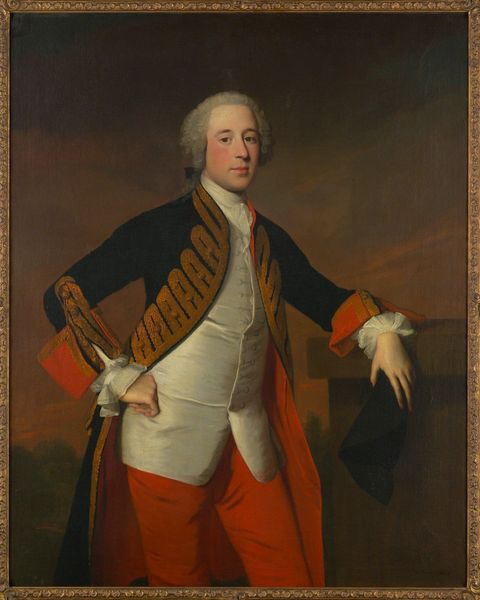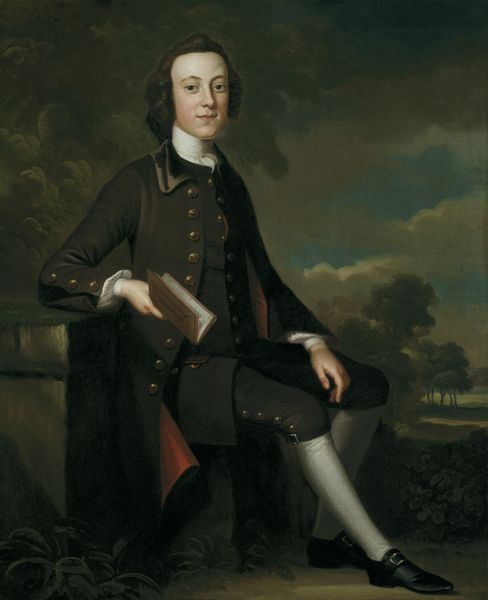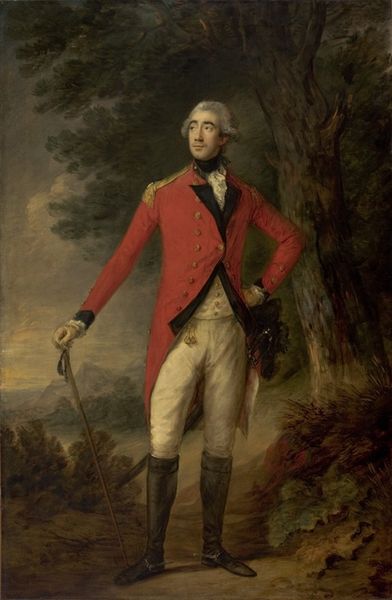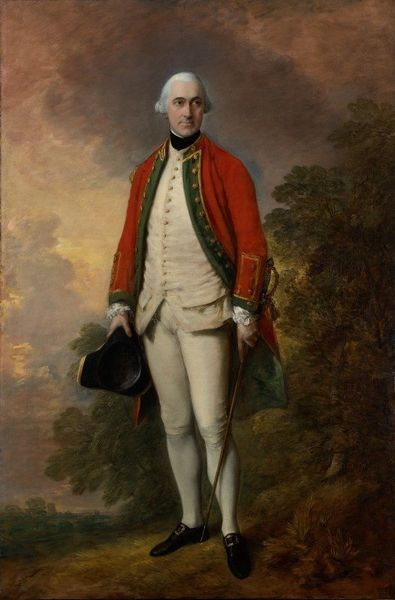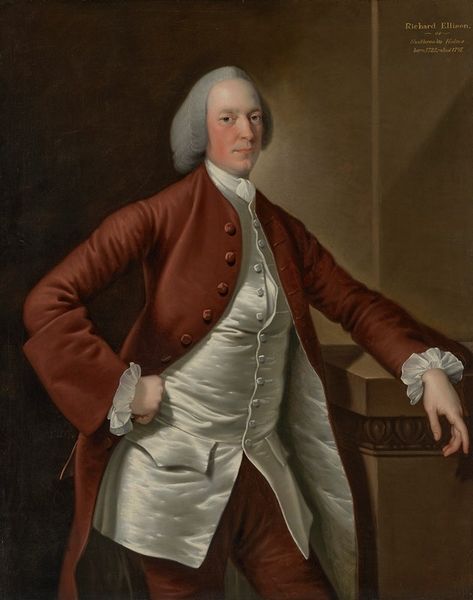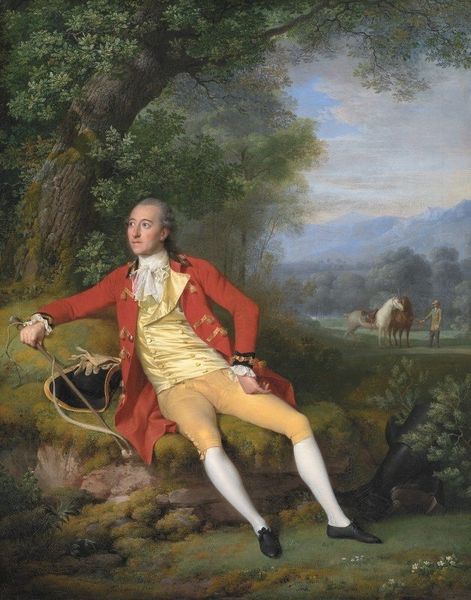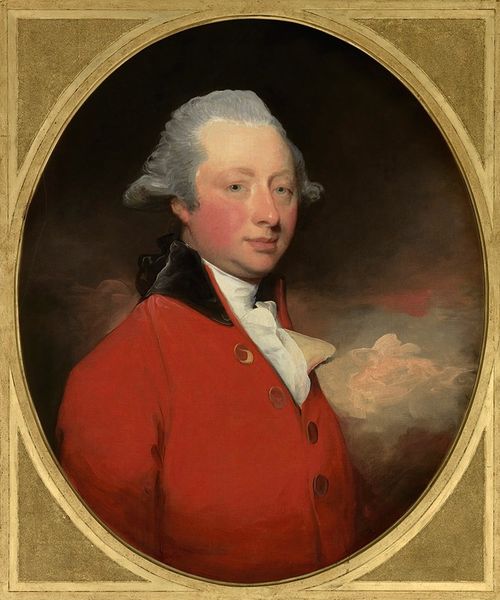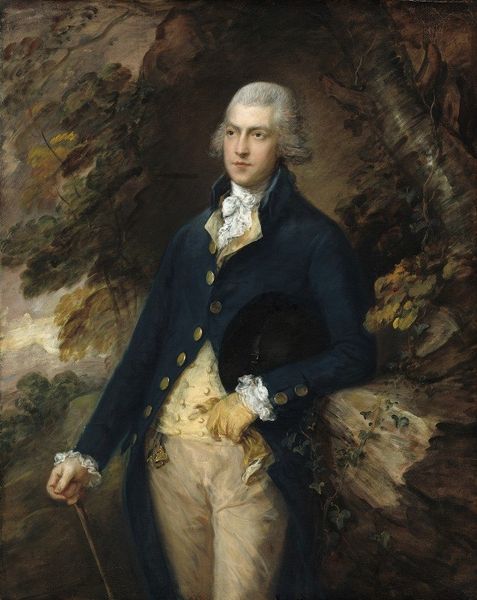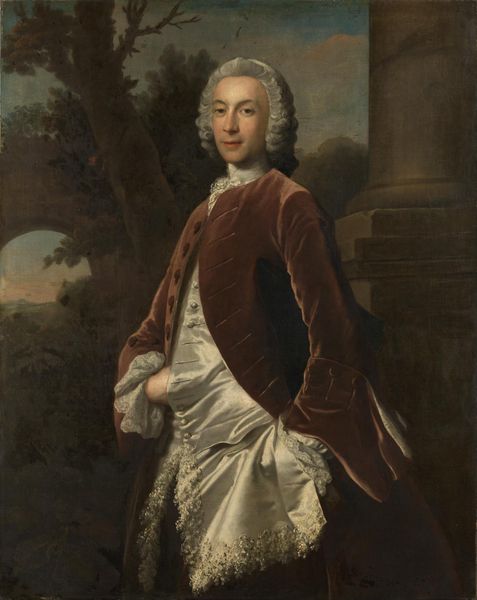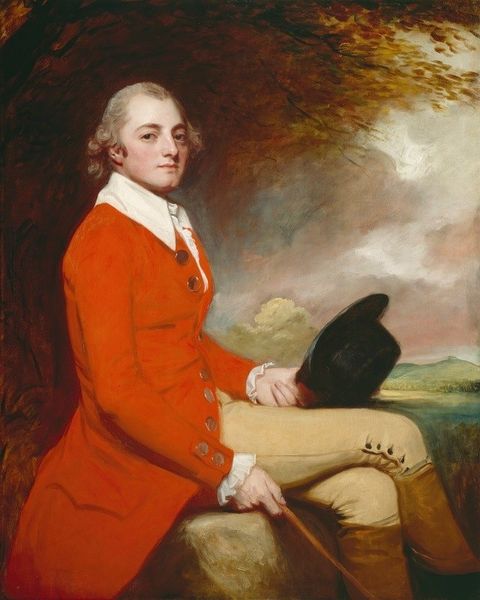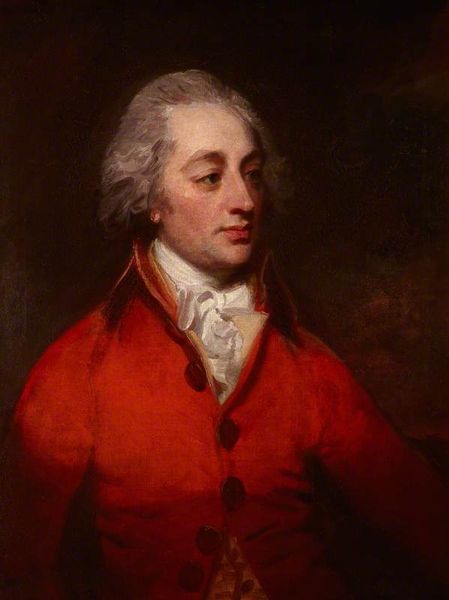
Copyright: Public Domain: Artvee
Curator: Standing before us, we have Thomas Gainsborough’s “The Honorable Richard Savage Nassau De Zuylestein, M.P.”, believed to be painted sometime between 1778 and 1780. It is a captivating example of portraiture. Editor: The immediate impression is overwhelmingly tonal – variations in rust-red across nearly the entire canvas. There’s something slightly unsettling about it, a near monochrome broken only by the gentleman's powdered wig. Curator: The subject, Richard Savage Nassau de Zuylestein, was a Member of Parliament, and his portrayal reflects the prevailing fashion of the time, blending aristocracy with an idealized view of nature—it subtly nods toward Romanticism's embrace of feeling. Editor: Yes, the compositional structure directs our attention. Gainsborough utilizes this tonal field – the shades and saturations of red-orange - to unify figure and ground. Even the dog almost melts into the environment. It's less about individual elements and more about the visual orchestration of form. Curator: Indeed. And observe how Gainsborough uses the landscape backdrop—the towering tree to the left, the hints of distant clouds—as symbolic cues, subtly underscoring the subject's connection to the land and the established order. It speaks volumes about ancestral rootedness and a sense of continuity. Editor: Precisely, and in purely formal terms, it enhances depth. The tree’s massive form anchors the composition, contrasting with the delicate brushstrokes that suggest the distance and atmospheric perspective. The details emerge as one explores its design. Curator: The choice of attire, the red coat, waistcoat, and breeches, also communicates status, linking him visually with traditional ideas of aristocracy and English country life. Red has long been associated with authority and passion. Editor: True, but one might also see a kind of artificiality in that monolithic hue – it renders the man almost like a painted automaton. Curator: Perhaps, or perhaps the redness invites viewers to probe at the meaning and function of symbolism. In his own time, De Zuylestein’s family was embroiled in local controversies, so a powerful figure surrounded by strong symbolism certainly carries considerable weight. Editor: In summary, we encounter not merely a portrait but a study in constructed visual relations, a series of compositional arrangements carefully designed to deliver layered narratives. Curator: And a glimpse into the complex world of symbols that help reflect societal and personal values through changing times.
Comments
No comments
Be the first to comment and join the conversation on the ultimate creative platform.

